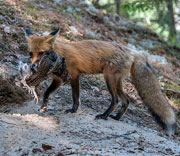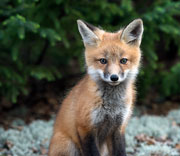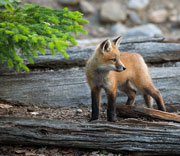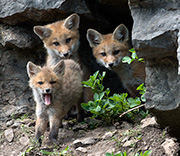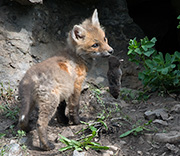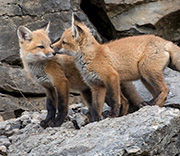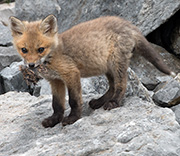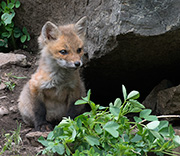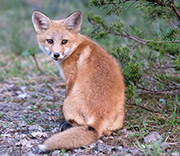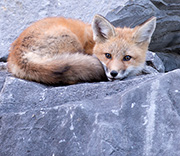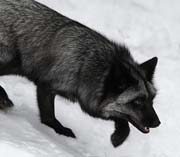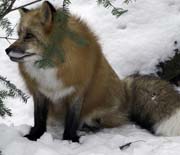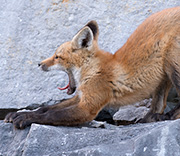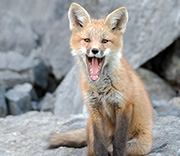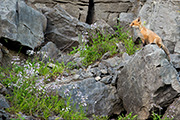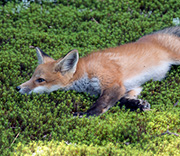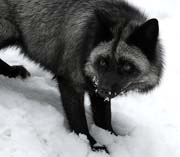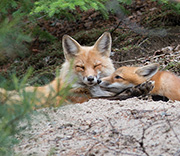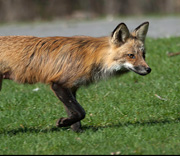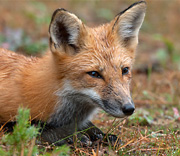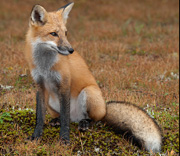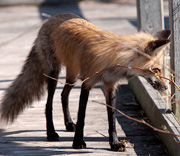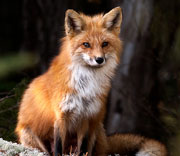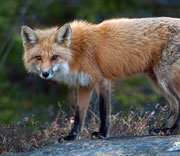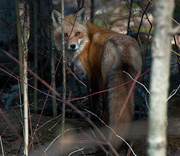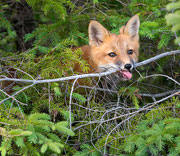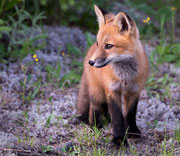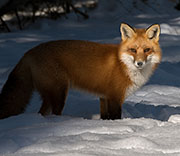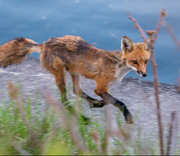
Red Fox (Vulpes vulpes)
When you observe a red fox, you will quickly see that they are in the same family (Canidae), as domestic dogs, along with coyotes and grey wolves. There is one thing that is strikingly different and that is their eyes, which have a vertically-slit pupil, akin to that seen in many cat species. Not only do they have excellent eyesight, they also have a keen sense of smell, and acute hearing, which help them greatly when hunting.
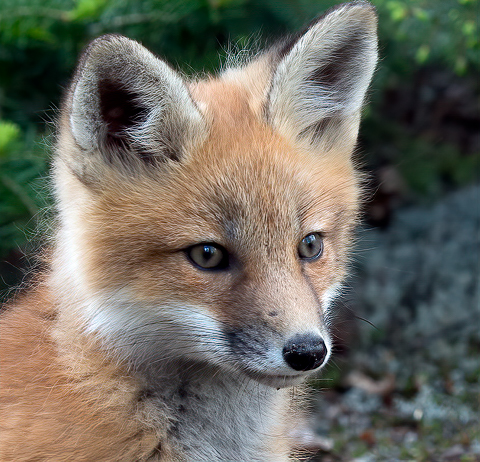 Red foxes eat mostly small mammal like voles, mice, lemmings, squirrels, chipmunks and hares. But they are very opportunistic and supplement this with a wide variety of other foods, including plants. Their diet changes with the seasons: they may eat mainly small mammals in fall and winter, augmented in spring with nesting waterfowl and other bird, and in summer with insects and berries.
Red foxes eat mostly small mammal like voles, mice, lemmings, squirrels, chipmunks and hares. But they are very opportunistic and supplement this with a wide variety of other foods, including plants. Their diet changes with the seasons: they may eat mainly small mammals in fall and winter, augmented in spring with nesting waterfowl and other bird, and in summer with insects and berries.
Red Foxes breed in winter and soon after, they seek out a suitable den. The dens are usually a burrow which the vixen (female) either digs herself or she may renovate an old woodchuck hole by expanding it. The den can sometimes be a hollow log, brush pile or beneath an abandoned building or structure. A single pair of foxes may have two or more dens close to each other. They will sometimes move litters of pups from one den to another to escape danger or for a change of scenery.
While the vixen stays with and nurses the newborn kits, the father is out hunting for the family. Soon the kits will eat regurgitated meat. When they get a bit older, the vixen also goes out to hunt. The young foxes soon begin to play at the entrance of the den and venture nearby. To witness these cute pups in the wild is a huge thrill.
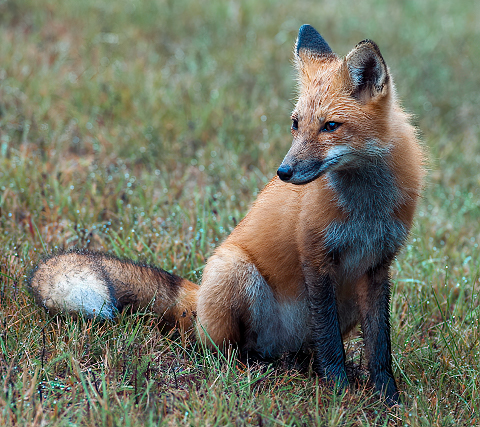 The parents bring dead small game for the kits to play with. This helps them learn about the prey, the smell and how to eat it. The kits practice hunting with the adults. Once they learn to feed themselves, they leave the den on their own.
The parents bring dead small game for the kits to play with. This helps them learn about the prey, the smell and how to eat it. The kits practice hunting with the adults. Once they learn to feed themselves, they leave the den on their own.
Foxes were once considered as vermin. Fortunately people now recognize that they are very beneficial as they help reduce the population of farm pests such as rats, mice, squirrels, groundhogs and insects.
Red Foxes have a very wide distribution where they reside across the entire Northern Hemisphere. Foxes live around the world in many diverse habitats including forests, grasslands, mountains, and deserts. They also adapt well to human environments such as farms, suburban areas, and even large communities. We have heard the phrase, as sly as a fox which is based on their legendary reputation for intelligence and cunning.
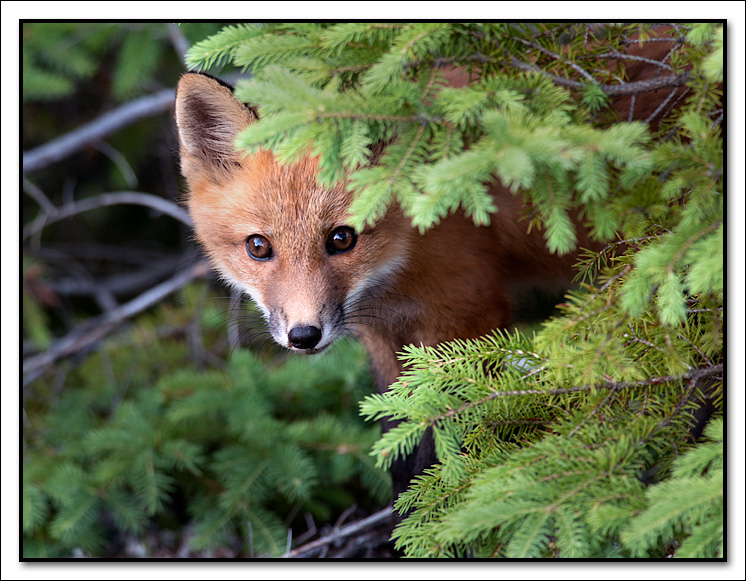
Juvenile Red Fox is cautiously curious as they are constently learning their environment.
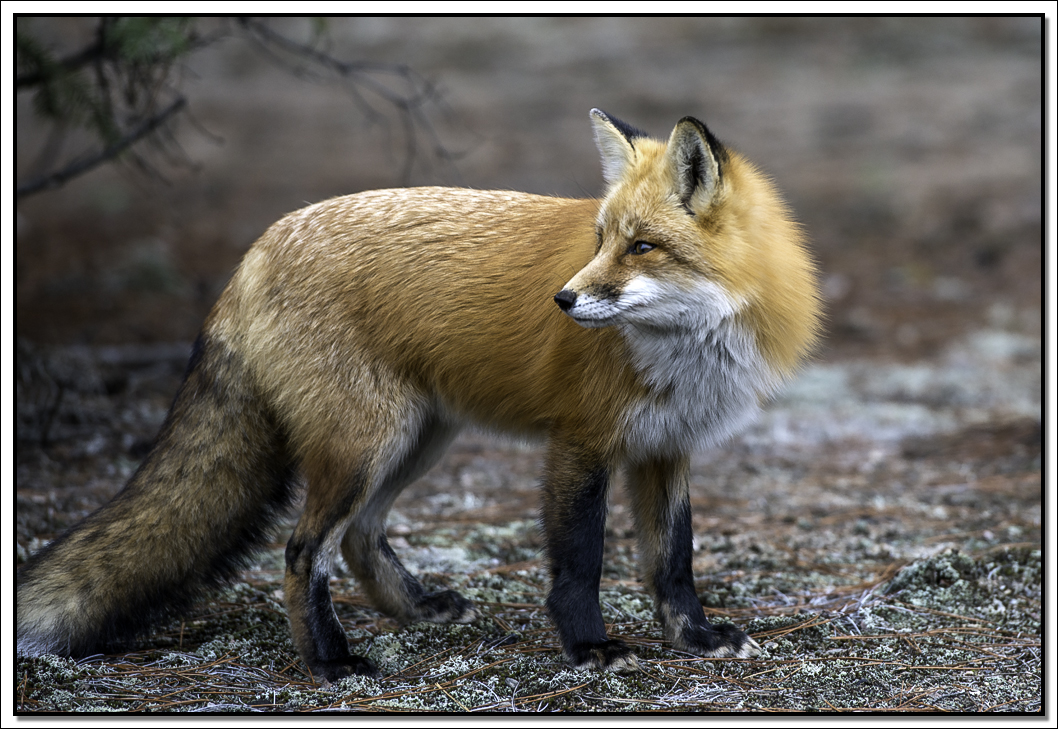
The tail of a fox is a beautiful feature, but it is also useful. A fox's tail aids its balance and they use them as flag to communicate. They can also use their tail as a wrap around scarf to keep them warm during the winter.
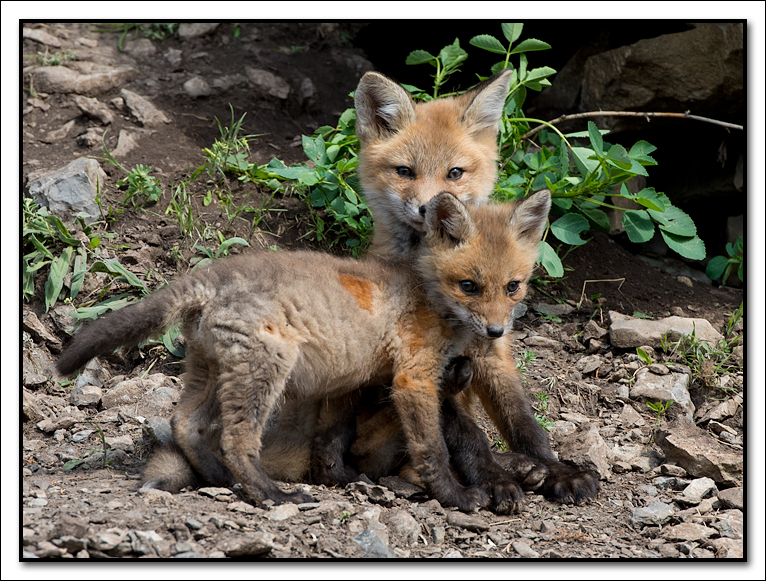
A pair of kits hanging out just outside the den opening. Fox's are very playful and kits play fight and have fun playing keep-away with items.
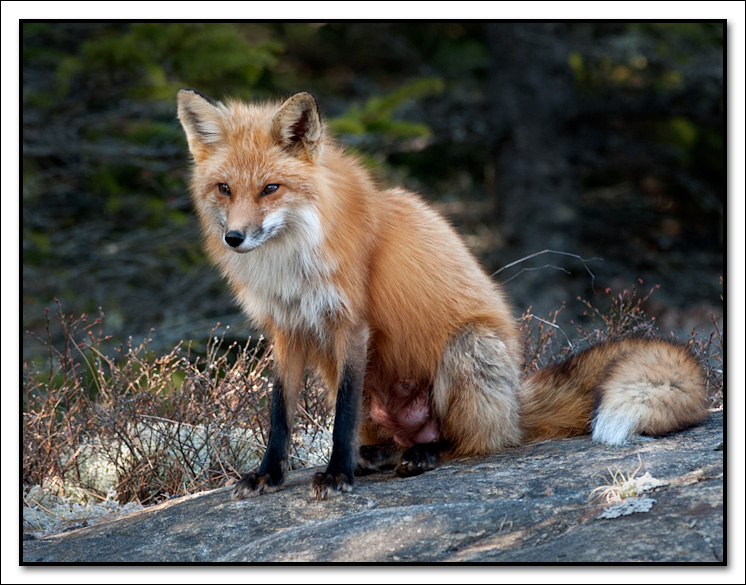
Red Fox vixen nearly ready to give birth to a litter of kits.
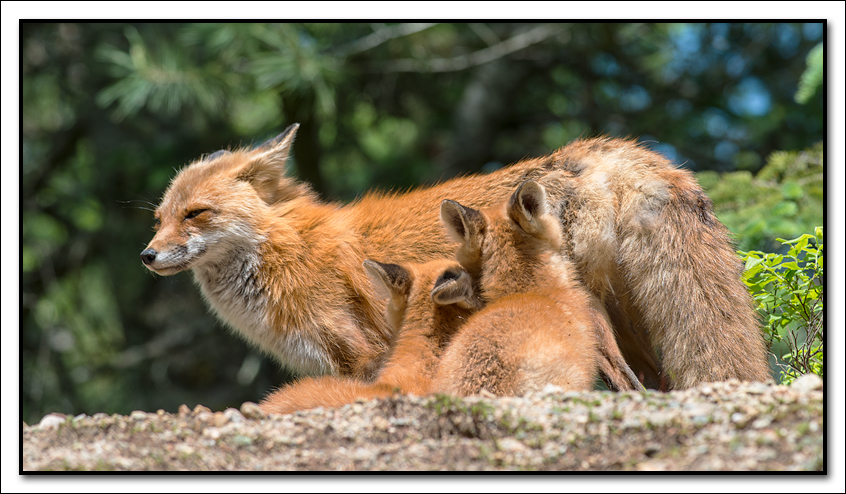
Red Fox are great parents. While the mother protects the young pups in the den, the red fox dad travels long distances to find and provide food for the family. When the young are weaned (at 12 weeks), they can accompany their parents on foraging trips. They have a lot to learn before they can fend for themselves.

